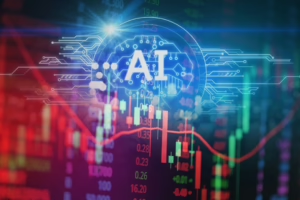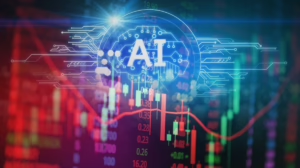What is AI? Breaking Down the Definition of Artificial Intelligence
Introduction
Artificial Intelligence (AI) has rapidly transformed from a concept in science fiction to a fundamental part of everyday life. From virtual assistants to smart home devices, AI systems have begun to permeate various aspects of our personal and professional lives. But what exactly is AI? In this article, we will break down its definition, explore its historical evolution, primary types, operational paradigms, applications, and the ethical considerations that come with its widespread adoption.
The Definition of Artificial Intelligence
Artificial Intelligence, broadly speaking, refers to the capability of a machine to imitate intelligent human behavior. However, this definition is both simplistic and layer rich, as it suggests various interpretations and functional scopes of intelligence.
-
Narrow vs. General AI
-
Narrow AI: Most AI systems today operate under this category, designed for specific tasks—be it image recognition, language translation, or automated trading. Examples include Google Search algorithms and recommendation systems used by platforms such as Netflix and Amazon.
-
General AI: This concept refers to machines that possess the ability to understand, learn, and apply knowledge in a way that is indistinguishable from a human being. While still theoretical, General AI represents the ultimate goal for researchers in the field.
-
Historical Perspective on AI
To appreciate the current landscape of AI, it’s essential to consider its historical context.
Early Beginnings
-
1950s: The term “Artificial Intelligence” was coined by John McCarthy during the Dartmouth Conference in 1956, where experts brainstormed the potential for machines to simulate intelligent behavior.
-
1956-1974: This period saw great optimism with advances in programming and algorithm design. Notable milestones included the development of the first AI programs, such as the Logic Theorist and General Problem Solver.
The AI Winters
- 1974-1980 & 1987-1993: These periods are characterized by diminished funding and interest, known as “AI Winters,” largely because of unmet expectations. System limitations became evident, and progress stalled.
The Resurgence
-
1997: Deep Blue, an IBM supercomputer, defeated world chess champion Garry Kasparov, rekindling public interest in AI.
-
2010s-Present: The advent of big data, advances in computing power, and breakthroughs in machine learning, particularly deep learning, have accelerated the pace of development and deployment of AI technologies.
Key Components of AI
AI derives its capabilities from a variety of technological components:
-
Machine Learning (ML): This subfield focuses on algorithms that enable computers to learn from data. ML can be supervised (requiring labeled datasets) or unsupervised (finding patterns in unlabeled data).
-
Neural Networks: Drawing inspiration from human brain structure, neural networks consist of interconnected nodes that analyze data in layers. Deep learning, a subtype of ML, utilizes deep neural networks to process vast amounts of information.
-
Natural Language Processing (NLP): This enables machines to understand and generate human language. Applications include chatbots, voice assistants, and translation services.
-
Computer Vision: This allows machines to interpret visual data from the world, applicable in areas like facial recognition and autonomous vehicles.
Current Applications of AI
AI’s transformative capabilities are evident across various sectors:
Healthcare
-
Diagnostics: AI algorithms assist in diagnosing medical conditions from imaging data, thus providing faster and more accurate results.
-
Treatment Plans: Personalized medicine, powered by AI, tailors treatment plans based on individual genetic profiles.
Finance
-
Fraud Detection: AI systems analyze transaction patterns to identify potential fraud, reducing losses for businesses and consumers.
-
Algorithmic Trading: AI-driven algorithms analyze market data to make real-time trading decisions.
Transportation
-
Autonomous Vehicles: Self-driving technology leverages AI for navigation, hazard detection, and decision-making, promising a future of safer roads.
-
Traffic Management: AI optimizes routing and traffic flow in urban environments, reducing congestion and emissions.
Customer Service
- Chatbots and Virtual Assistants: These AI applications provide 24/7 customer support, answering queries and resolving issues quickly and efficiently.
Education
- Personalized Learning: AI systems analyze student performance, tailoring educational content to meet individual learning styles and needs.
Manufacturing
- Predictive Maintenance: AI monitors machinery for potential issues, facilitating proactive maintenance and minimizing downtime.
Ethical Considerations in AI
As AI becomes ubiquitous, ethical concerns have surfaced. Here are some important issues to consider:
Bias and Fairness
AI systems can perpetuate biases found in training data, leading to discrimination in applications such as hiring, lending, and law enforcement. Ensuring fairness necessitates rigorous training and regular audits of AI algorithms.
Privacy Concerns
Aggregating vast amounts of personal data raises significant privacy concerns, particularly regarding surveillance and unauthorized data sharing. Robust measures for compliance with data protection regulations (e.g., GDPR) are paramount.
Job Displacement
AI’s efficiency may lead to job displacement in various industries. While it is likely to create new opportunities, the transition phase may pose challenges for workers that need to adapt.
Accountability
As AI systems make autonomous decisions, determining accountability for errors or misjudgments becomes complex. Establishing clear guidelines and regulatory frameworks is essential for holding stakeholders accountable.
The Future of AI
Looking ahead, the potential for AI is immense. We are on the cusp of significant advancements, driven by continued research, collaboration, and investment.
Enhanced Human-Machine Collaboration
The future of AI could see improved human-machine collaboration, where AI systems augment human capabilities rather than replace them. This blending could lead to enhanced creativity, efficiency, and decision-making.
Continued Ethical Discourse
With the rapid pace of AI development, ethical discourse will need to keep pace. Policymakers, technologists, and ethicists must collaborate to create frameworks that promote responsible AI use, ensuring that advancements benefit society as a whole.
Emergence of Explainable AI
As AI systems become more complex, there will be a greater need for transparency. Explainable AI is an emerging area that focuses on developing models that can explain their decision-making processes in understandable terms for users.
Conclusion
Artificial Intelligence continues to redefine the landscape of technology and society. As we break down its definition and understand its complexities, we must remain vigilant in addressing the accompanying ethical concerns. We are at a pivotal moment where the opportunities AI presents can significantly enhance quality of life and drive societal advancement.
While its journey is fraught with challenges, the promise of AI—when harnessed responsibly—offers unprecedented possibilities for the future. As we continue to develop and integrate AI systems into our lives, informed discourse and collaborative effort will be key to unlocking its full potential while minimizing risks.
References
- Russell, S. & Norvig, P. (2021). Artificial Intelligence: A Modern Approach. Pearson.
- Bostrom, N. (2014). Superintelligence: Paths, Dangers, Strategies. Oxford University Press.
- Goodfellow, I., Bengio, Y., & Courville, A. (2016). Deep Learning. MIT Press.
- Chui, M., Manyika, J., & Miremadi, M. (2016). “Where machines could replace humans—and where they can’t (yet).” McKinsey Quarterly.
- Mckinsey Global Institute. (2017). A future that works: Automation, employment, and productivity.
- Jobin, A., Ienca, M., & Andorno, R. (2019). “Artificial Intelligence: The Global Landscape of Ethics Guidelines.” Nature Machine Intelligence.
This paper provides a comprehensive overview of AI by breaking down its definition and exploring its implications. From understanding its components to addressing ethical concerns, it aims to offer valuable insights into the evolving world of Artificial Intelligence.


























Add Comment